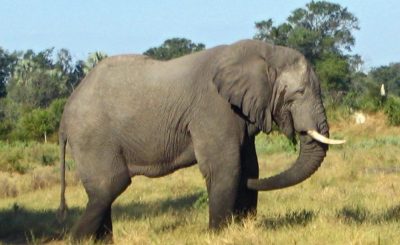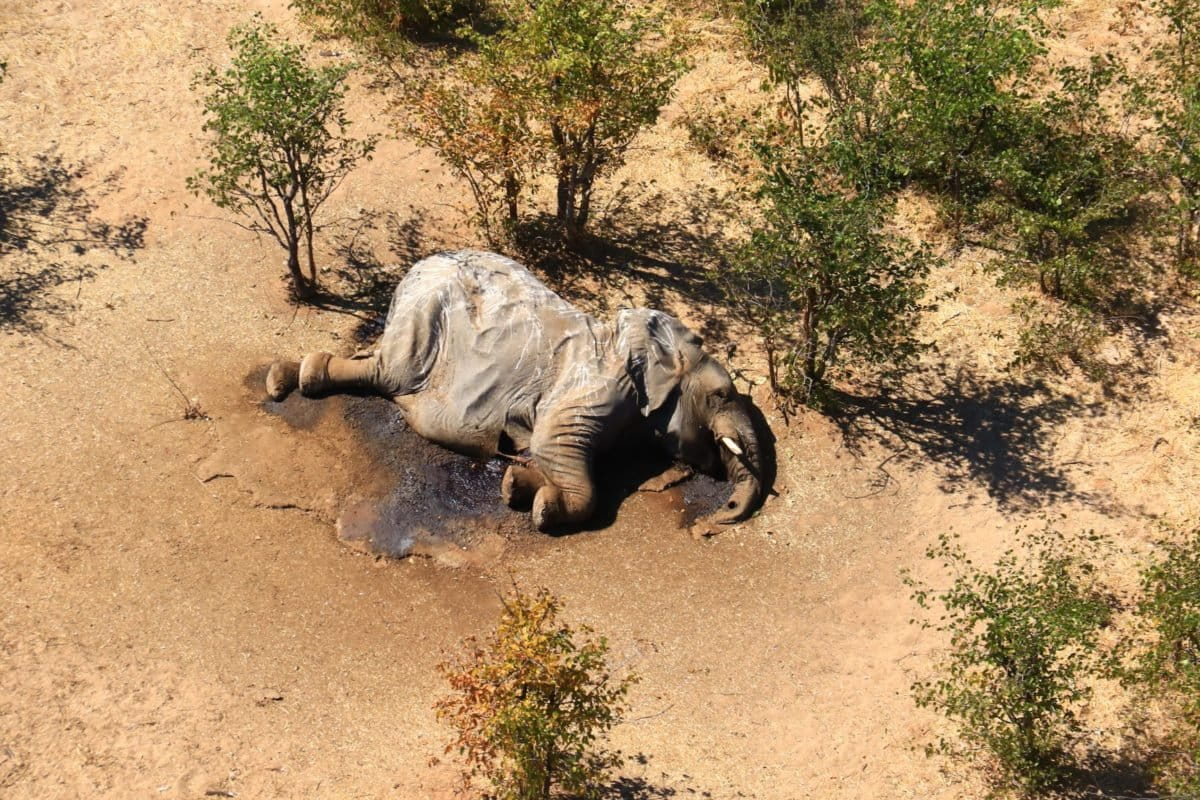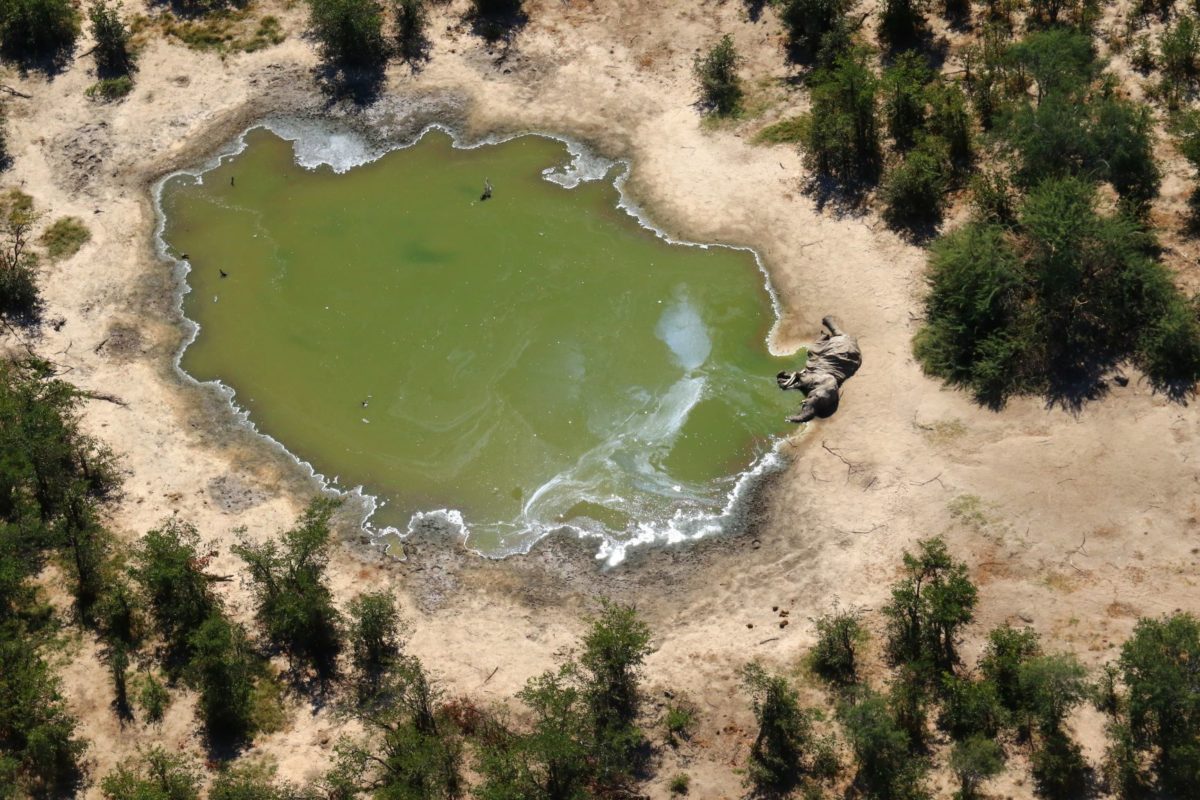Calls for Swift Action as Hundreds of Elephants Die in Botswana’s Okavango Delta

Nearly 400 elephants have died in Botswana’s Okavango Delta since March, in what wildlife experts say is one of the largest elephant mortality events ever recorded. Conservationists have criticized the government’s handling of the matter and are urging them to speed up investigations.
Botswana’s environment ministry registered the first of these unexplained elephant deaths in the Okavango in March, but the discovery of carcasses has accelerated since May.
Many of the dead elephants have been found near natural watering holes, while some have been found on trails. Some of the animals were found collapsed on their chests, suggesting their death had been fast and sudden.
The authorities said at the start of June that they were investigating just over 100 elephant deaths. Media reports said poaching, poisoning and anthrax had been ruled out as possible causes by the authorities.
Anthrax occurs naturally in the ground in parts of Botswana and has been known to kill wildlife in large numbers; wildlife disease experts have told Mongabay that this could only be ruled out as a cause by laboratory tests. The government said it was sending samples from the carcasses to South Africa for further testing, according to local media reports. However, officials said the process could be delayed because of the COVID-19 pandemic.
But international and local wildlife groups have criticized the government’s handling of the investigation. They say private surveys carried out in mid-June by conservationists, the results of which Mongabay has seen — show that almost 400 elephants have died.
They also say authorities have ignored offers to help with testing and investigation.
“There is evidence that suggests the real number of dead elephants is 400 so far,” Mark Hiley, operations director at the conservation group National Park Rescue, told Mongabay. “This is one of the biggest elephant mortality events of its kind, certainly this century.
“What needs to be done in a situation like this is to immediately take samples for testing. The government has bungled [taking these] urgently needed samples and failed to send them to a qualified lab for months.”
Hiley and others say samples were not quickly sent to labs for analysis as the government claims, delaying efforts to understand what is taking place in the Okavango.
“There is an urgent need to send in a professional, impartial team, with the proper resources and experience to carry out a full investigation,” Hiley added. “Offers have been made [by conservationists] but the government has failed to respond.”

Elephant carcass in the Okavango Delta.
There are more elephants in Botswana than in any other country. Measures to protect large wildlife, including hunting bans and “shoot-to-kill” policies to deter poachers, have seen the population grow from 80,000 in the late 1990s to an estimated 135,000 today.
But conservationists have raised the alarm over a rise in poaching since Mokgweetsi Masisi became president two years ago.
Having promised to reduce the number of elephants in the country amid rising human-wildlife conflicts as the human population grows, Masisi last year lifted a ban on hunting elephants. The ban had been introduced five years previously by his predecessor, Ian Khama.
Aerial surveys found a nearly six-fold rise in elephant poaching in the north of the country between 2014 and 2018. About 385 elephants were poached from 2017 to early October 2018, and 156 for the whole of 2018, including 90 identified in a single two-month period between July and September in a survey carried out with representatives of Botswana’s Department of Wildlife and National Parks. Government officials later disputed the findings.
“Given the high volume of professional poaching in the Okavango area since the COVID-19 lockdowns began, poison remains a likely candidate,” Hiley said.
Poachers often lay poison traps to kill wildlife and remove what they want from the carcasses afterward. Local activists said they had found the remnants of an improvised camp near to where some elephants had died.
But no evidence of removal of dead elephants’ tusks has been reported.
“There is a worrying lack of urgency about this situation,” Mary Rice of the U.K.-based Environmental Investigation Agency (EIA) told Mongabay. “This is symptomatic of the change in philosophy of this new regime and the U-turn which has been seen in the country with regard to the protection of key species.”
Government officials did not respond when contacted by Mongabay about their investigation into the elephant deaths.
There is an urgent need for comprehensive testing and investigation, Hiley said.

Hundreds of elephants have died in Botswana’s Okavango Delta; the cause is yet to be determined.
“Horrific scenes were reported to me of dying elephants running around in circles, suggesting something — potentially neurotoxins — impacting brain function. Some elephants reportedly had their rear quarters paralyzed,” he said.
“It is possible that the disaster has implications for people living in and around the Okavango Delta region, but until a proper team is sent in [to collect and test samples], this cannot be known,” he said.
“If it’s poison, something can be done about it, but if it’s a new disease it could be worse, especially as elephants can travel such huge distances. This is why it is so important to do tests as quickly as possible.”
One expert on disease among African wildlife, who spoke to Mongabay on condition of anonymity, said they had “never seen any elephant mortality on this scale before.” But they urged against jumping to any conclusions until advanced tests had been done.
“Theoretically, anthrax could be responsible,” the expert said. “It is also possible that a pathogen has emerged and is virulent in the high-density elephant population in that area.
“Or it could be something like the mass deaths of the saiga antelopes [in Kazakhstan in 2015] which turned out in the end to be down to a not uncommon pathogen.
“The only way to find out is to do proper tests.”
*
Note to readers: please click the share buttons above or below. Forward this article to your email lists. Crosspost on your blog site, internet forums. etc.
Featured image is from The Ecologist

